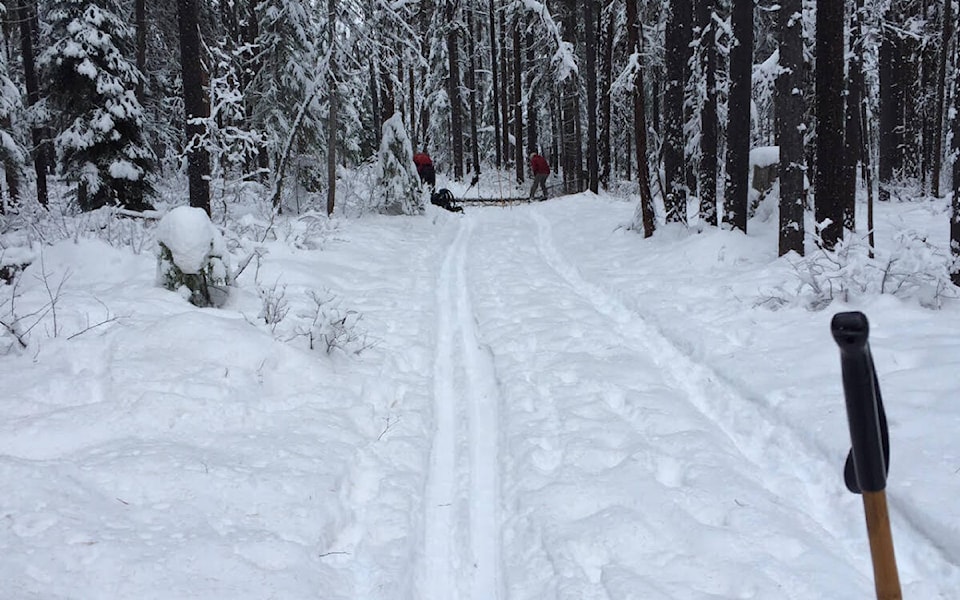As we settle into winter the organizations who build and maintain Kimberley’s many trails ask that you consider proper trail use and etiquette.
“Kimberley trail systems typically host five or more different winter activities, and managing the interests of various user groups requires more than a bit of self-monitoring and support from everyone,” said Rod Chapman, director at the Kimberley Nature Park Society (KNPS).
Winter trail maintenance in Kimberley is handled by the Kimberley Trails Society along with support from the KNPS and Friends of Lois Creek groups and each year hundreds of volunteer hours are put into trail maintenance.
Trails are packed down by a dedicated group of volunteers who use a narrow grooming machine called a SnowDog.
READ MORE: Custom grooming machine boosts Kimberley’s growing fat bike scene
Additionally, classic skiers do a lot of work by setting ski tracks often going well beyond the groomed loops.
“Winter trail use etiquette starts with awareness,” Chapman said. “Nobody likes postholes or deep ruts in the winter trails – or being yelled at by another trail user. There are no trail police, so don’t try to be one.”
Proper trail etiquette begins with these guidelines.
Walkers and runners should stop if they are “post-holing” or punching through the snow. While foot traffic is welcomed on groomed loops and packed trails, travel without snowshoes is not recommended until the trail is well packed. Don’t walk on the classic ski tracks or create large holes in the walking tracks.
Snowshoers can create their own paths if they wish to venture into deeper snow and they’re welcome to use the groomed loops.
“Snowshoers can have a positive impact on trails, especially after recent snowfalls, by clearly demarcating the walker side from the ski side,” Chapman said. “On double-wide trails and roads, snowshoe on one side leaving room for a ski track on the other side.”
Do not, however, snowshoe on classic ski tracks.
Fat biking continues to grow in popularity and winter biking is welcomed on all trails that are appropriate for foot and snowshoe travel, especially with tires wider than three inches. There are specifically groomed trails in the Nature Park and Lois Creek for Fat Biking, foot traffic and snowshoeing.
Finally, cross country skiing is acceptable on all trails. All trails that are wide enough will have a ski track set by users. If you happen to be the first one out after a dump of snow, continue to put the new track to one side.
You can stay up to date on trail conditions by visiting Trailforks, Kimberley Trails Society or the Kimberley Winter Trail Conditions pages.
